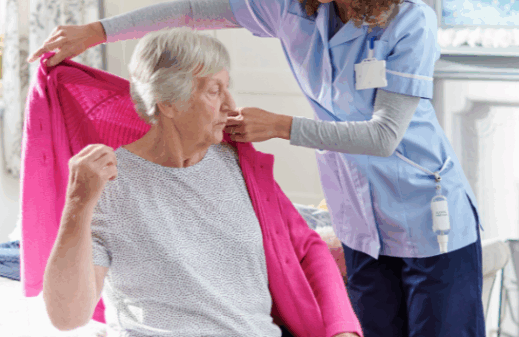New tech is improving senior care – and it couldn’t come at a better time. The senior population is growing and it is becoming more difficult to find qualified staff at senior care facilities. By using tech tools in addition to human caregiving, facilities may be able to improve senior safety and well-being.
#1: Prescription Management
As seniors age, the number of prescriptions they take tends to increase. Unfortunately, prescription mix-ups are common. Seniors may struggle to read the small print on prescription labels, which may lead them to take the wrong dose or switch prescriptions. They may also forget whether they’ve taken their pills already that day, leading to missed or doubled doses.
Whereas some facilities offer medication management services, many residents in assisted living facilities prefer to handle their own medications. This also reduces the burden on staff. The downside is safety concerns. However, new prescription tools make managing prescriptions easier and safer.
Smart medication management tools dispense the correct doses and issue medication reminders to avoid missed doses. Some even have locks and allow caregiver monitoring, making them ideal for use in residential care facilities.
#2: Personal Safety
Medical alert devices are not new, but new wearable devices take medical alerts to the next level.
In addition to making it easy for seniors to call for emergency assistance 24/7, some provide support for seniors who fall and aren’t able to call for help. These devices sense when the wearer falls and automatically send out an alert for assistance.
Some wearable devices also have GPS tracking, making them ideal for senior residents prone to wandering. When combined with alarm systems, these tools make it easy to know exactly when wandering residents have left and where they’ve gone, helping staff to locate and help them before anything bad happens.
For older adults, falling and wandering are two of the biggest personal safety risks, meaning these features could be literal lifesavers.
#3: Social Connections
The CDC says social isolation significantly increases a person’s risk of premature death and that the impact rivals the negative effects of smoking, obesity, and physical inactivity. Social isolation is also associated with an increased risk of dementia, whereas poor social relationships are associated with an increased risk of heart disease and stroke. Research has found that one in four seniors is socially isolated.
In addition to providing senior activities that support socialization, assisted living facilities should encourage the use of technology to help residents stay connected with their friends and family. For example, tablets that offer simple interfaces and large screens are easier for seniors to use for video calls, email, and other means of connection.
#4: Companionship
Animals promote good physical and mental health among seniors. Whereas facility events that involve animals provide some benefits, owning a pet offers the greatest benefits. Unfortunately, some residents may not have the mental or physical ability to care for a pet properly.
For residents who can’t have pets, robot pets may provide an alternative. Some of these robotic cats and dogs are very lifelike. They have soft fur, meaning petting them is soothing. They also make sounds (such as purring) and realistic movements.
Research published in the JMIR Rehabilitation and Assistive Technologies found that robotic pets show promise in addressing the psychosocial needs of older adults and dementia patients. Furthermore, these robotic pets are affordable, making them a practical and accessible solution.
#5: Voice Assistance
Many people have started using smart home devices like the Amazon Echo. Residents in senior living communities will also benefit from these devices.
These all-purpose devices work well as emergency alert systems. Seniors can also use them to gain information or contact friends and family. For seniors with vision problems, talking to a voice-activated system may be easier than using a screen. It’s also possible to connect smart home devices to other devices, such as smart lights, allowing seniors to control these other devices using voice commands.
As residential care facilities navigate today’s many challenges, modern technologies provide solutions. Tangram’s commitment to innovation is evident in PCH Mutual’s latest Member benefit: CareChron, a free, Member-exclusive software designed to address documentation and communication needs for all policyholders. Tangram provides PCH policies for residential care facilities through the Personal Care & Assisted Living Insurance Center (PCALIC). Learn more.
This article was brought to you by Tangram Insurance Services.




